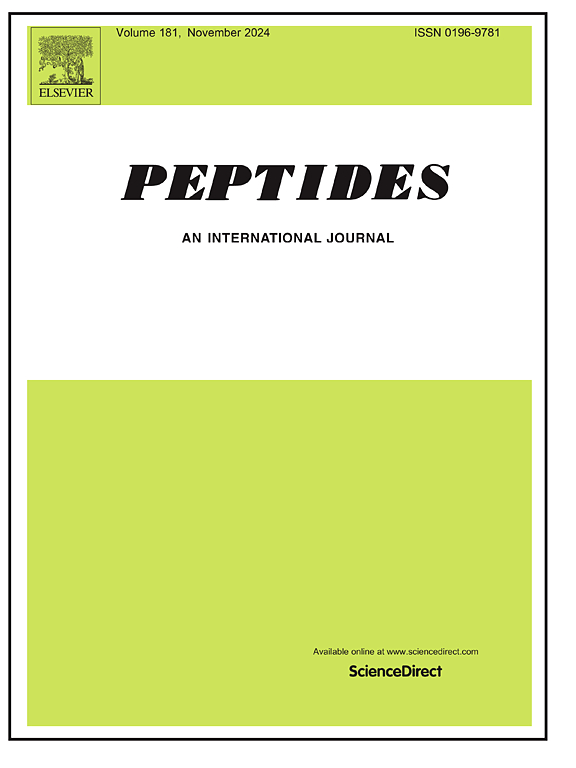Salusin-α preserves glomerular endothelial barrier function in hypertension via YAP/ZO-1 signaling pathway
IF 2.9
4区 医学
Q3 BIOCHEMISTRY & MOLECULAR BIOLOGY
引用次数: 0
Abstract
Hypertensive nephropathy (HN) is a leading cause of end-stage renal disease, driven by glomerular endothelial barrier dysfunction, inflammation, and tight junction impairment. Salusin-α, an endogenous bioactive peptide with cardiovascular protective properties, has emerged as a potential regulator of renal homeostasis, but its role in hypertensive renal injury remains unclear. This study investigated the protective effects of Salusin-α on glomerular endothelial barrier function and its underlying mechanism via the YAP/ZO-1 signaling pathway. Male C57BL/6 mice were randomized into control, angiotensin II/high-salt (ANG/HS)-induced hypertensive, and ANG/HS + Salusin-α (1 or 2 μg/kg) groups. Hypertensive mice exhibited reduced serum and renal Salusin-α levels (∼43 % and ∼55 %, respectively), increased renal inflammation (IL-1β, TNF-α, MCP-1 upregulated 2.6–3.1-fold), albuminuria (82.6 vs. 19.3 μg/day in controls), and ZO-1 downregulation (∼51 %). Salusin-α treatment dose-dependently restored ZO-1 expression (95 % of control levels at 2 μg/kg) and reduced albuminuria (∼48 %). In human renal glomerular endothelial cells (HRGECs), Salusin-α (10 nM) mitigated ANG/HS-induced barrier dysfunction (FITC-dextran flux reduced from 41.3 % to 19.6 %; TEER restored from 105.2 to 169.8 Ω·cm²) by inhibiting YAP nuclear translocation (∼52 % reduction) and preserving ZO-1. Critically, YAP overexpression abolished Salusin-α’s protective effects on ZO-1 and barrier integrity. These findings demonstrate that Salusin-α alleviates hypertensive renal injury by suppressing YAP-mediated ZO-1 degradation, thereby preserving glomerular endothelial barrier function and reducing inflammation. The study identifies Salusin-α as a novel therapeutic candidate targeting the YAP/ZO-1 axis in hypertensive nephropathy.
Salusin-α通过YAP/ZO-1信号通路保护高血压患者肾小球内皮屏障功能
高血压肾病(HN)是终末期肾脏疾病的主要原因,由肾小球内皮屏障功能障碍、炎症和紧密连接损伤驱动。Salusin-α是一种具有心血管保护作用的内源性生物活性肽,已被认为是肾脏稳态的潜在调节剂,但其在高血压肾损伤中的作用尚不清楚。本研究通过YAP/ZO-1信号通路探讨Salusin-α对肾小球内皮屏障功能的保护作用及其机制。雄性C57BL/6小鼠随机分为对照组、血管紧张素II/高盐(ANG/HS)致高血压组和ANG/HS + Salusin-α(1或2μg/kg)组。高血压小鼠表现出血清和肾脏Salusin-α水平降低(分别为~43%和~55%),肾脏炎症(IL-1β、TNF-α、MCP-1上调2.6-3.1倍),蛋白尿(82.6比19.3μg/d)和ZO-1下调(~51%)。Salusin-α剂量依赖性地恢复了ZO-1表达(2μg/kg时为对照水平的95%),并减少了蛋白尿(~48%)。在人肾小球内皮细胞(HRGECs)中,Salusin-α (10nM)通过抑制YAP核转位(减少约52%)和保留ZO-1,减轻了ANG/ hs诱导的屏障功能障碍(fitc -葡聚糖通量从41.3%降低到19.6%;TEER从105.2恢复到169.8 Ω·cm²)。重要的是,YAP过表达破坏了Salusin-α对ZO-1和屏障完整性的保护作用。这些结果表明Salusin-α通过抑制yap介导的ZO-1降解,从而维持肾小球内皮屏障功能,减轻炎症,从而减轻高血压肾损伤。该研究确定Salusin-α作为一种新的靶向YAP/ZO-1轴治疗高血压肾病的候选药物。
本文章由计算机程序翻译,如有差异,请以英文原文为准。
求助全文
约1分钟内获得全文
求助全文
来源期刊

Peptides
医学-生化与分子生物学
CiteScore
6.40
自引率
6.70%
发文量
130
审稿时长
28 days
期刊介绍:
Peptides is an international journal presenting original contributions on the biochemistry, physiology and pharmacology of biological active peptides, as well as their functions that relate to gastroenterology, endocrinology, and behavioral effects.
Peptides emphasizes all aspects of high profile peptide research in mammals and non-mammalian vertebrates. Special consideration can be given to plants and invertebrates. Submission of articles with clinical relevance is particularly encouraged.
 求助内容:
求助内容: 应助结果提醒方式:
应助结果提醒方式:


